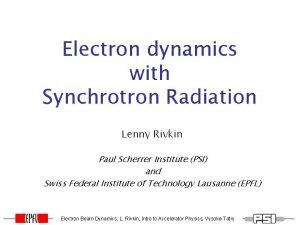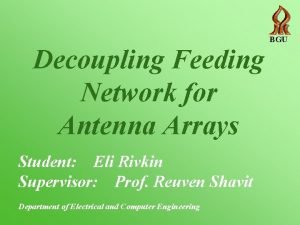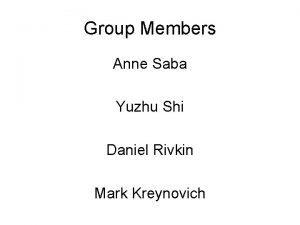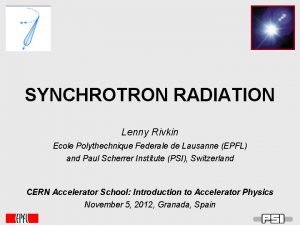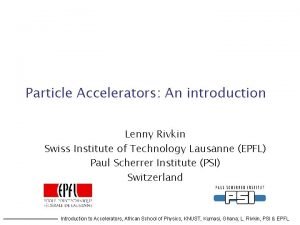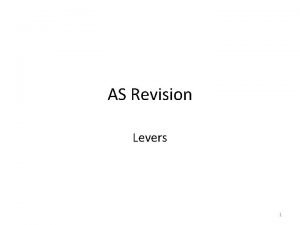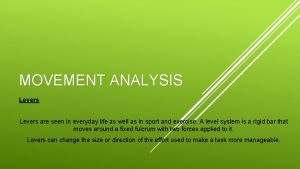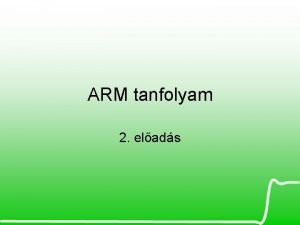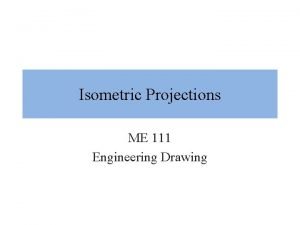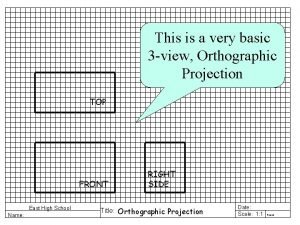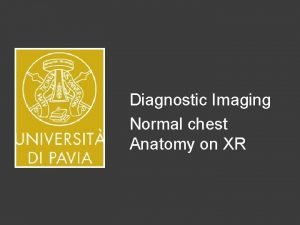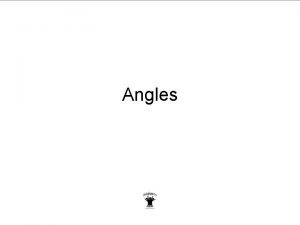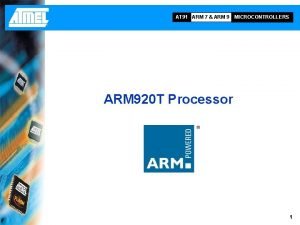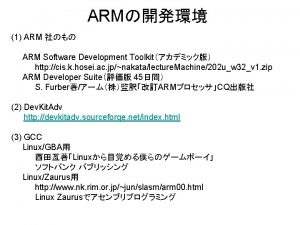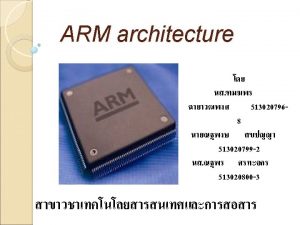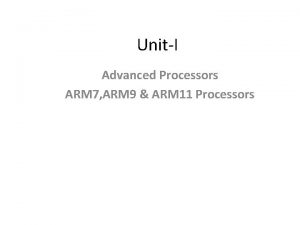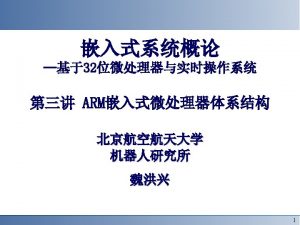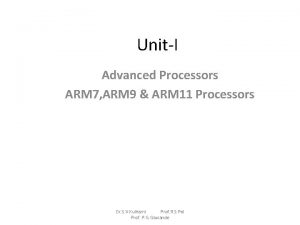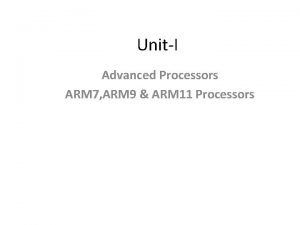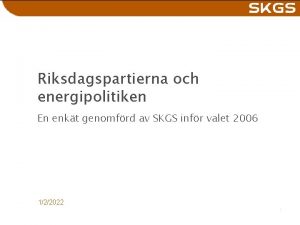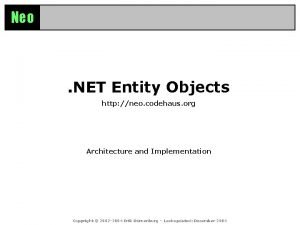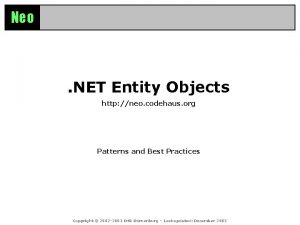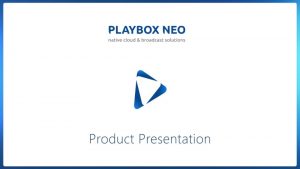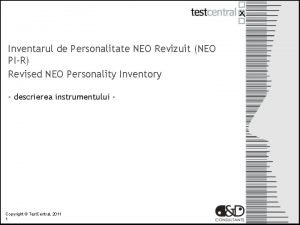NEO SKGs in view of ARM Andy Rivkin


















- Slides: 18

NEO SKGs in view of ARM Andy Rivkin, who hasn’t asked the other members of the SAT about this

Some setup • Until earlier this year, the expectation has been that we’d send astronauts to an NEO in deep space • SBAG stood up a team at NASA’s request to look at “Strategic Knowledge Gaps” (next slide) • The Asteroid Retrieval (Redirection? ) Mission (ARM) proposes moving a 8 -m NEO to high lunar orbit to serve as a new target for astronauts • At this writing, other details are TBD – We may know more when I’m actually speaking – Updated, Tuesday night: not really • Now we need to think about SKGs for the robotic retrieval/redirection phase in addition to the actual human visit

In context: 8 -m sized objects

“Strategic Knowledge Gaps” • “The gap between what the organization needs to know and what it knows now” • Taking a human visit to an NEO as a given*, what don’t we know how to do, and how do we learn to do it? • Ultimately, generate list of measurements, allowing design of precursor missions *Just for the purposes of this slide Zack, in The Strategic Management of Intellectual Capital and Organizational Knowledge, Choo & Bontis eds. (2002)

…for instance: • Goal: Ensure Kryptonian race survives planetary destruction • Path: Evacuate inhabitant(s) to intact planets • Example SKGs – Fraction of planets within reach that are habitable – Effects of non-K/M star on Kryptonian life – Likely reactions of lessadvanced civilizations to Morrison and Quitely, 2008

SB SKG Themes and Categories SB SKGs can be organized into several themes, which can be further divided into categories: I. Human mission target identification (NEOs). The identification of multiple targets for human exploration is fundamental. II. Understand how to work on or interact with the SB surface. Human presence may disturb the environment in non-intuitive ways. We need to understand how best to perform sample acquisition and handling, instrument placement, and proximity operations. III. Understand the SB environment and its potential risk/benefit to crew, systems, and operational assets. The small body environment may include dust emitted periodically (for instance via levitation) or episodically (after impact or spin-up events). It may enhance or screen solar radiation. It may be gravitationally metastable. IV. Understand the SB resource potential. ISRU is considered a “game changer” in how humans explore the Solar System by enabling an infrastructure that allows a sustainable human presence in space. The short-stay missions likely to be in the first wave of NEO or Phobos/Deimos visits may test or prepare that infrastructure but are unlikely to take advantage of it.

Critical Items Timescale SKGs: Number and Name Near 1. I-A Constraints on targets: Reachable targets within architecture and radiation exposure limits 2. I-B NEO orbit distribution Mid 1. I-C-3: NEO rotation state 2. II-C-2: Geotechnical properties of SB surface 3. II-D-1: Anchoring for tethered activities 4. II-D-2: Non-contact proximity operations development 5. III-A-1: Particle environment, undisturbed 6. III-A-3: Particle environment post-disturbance 7. III-B-1: Local effects post-solar flare 8. III-B-2: Small body surfaces as secondary radiation sources 9. III-D-1: Local structural stability 10. III-D-2: Global structural stability Long 1. III-A-2: Phobos/Deimos torus characterization

Critical Items Timescale SKGs: Number and Name Near 1. I-A Constraints on targets: Reachable targets within architecture and radiation exposure limits 2. I-B NEO orbit distribution Mid 1. I-C-3: NEO rotation state 2. II-C-2: Geotechnical properties of SB surface 3. II-D-1: Anchoring for tethered activities 4. II-D-2: Non-contact proximity operations development 5. III-A-1: Particle environment, undisturbed 6. III-A-3: Particle environment post-disturbance 7. III-B-1: Local effects post-solar flare 8. III-B-2: Small body surfaces as secondary radiation sources 9. III-D-1: Local structural stability 10. III-D-2: Global structural stability Long 1. III-A-2: Phobos/Deimos torus characterization

Critical Measurements: Part 1 Measurement SKGs: Number and Name Notes Orbit/Size/Frequency of NEOs in accessible orbits to 30 m size I-A-1, I-A-2, I-B-1, I-B-2 Survey where possible, modeling as necessary. Size from HQ. Biological Research I-A-1, I-A-2, I-B-1, I-B-2 Better defined by bio experts Propulsion Research I-A-1, I-A-2 Better defined by propulsion engineers Shielding Research I-A-1, I-A-2 Better defined by engineers Radiation dosimetry in asteroid milieu I-A-1, I-A-2, III-B-1, III-B-2 Details better defined by bio experts. CRa. TER, RAD example instruments Measure rotation rate of target asteroid to 15 minute precision I-C-3, III-D-1, III-D-2 After target is selected; combination of Earth-based, spacecraft, in-situ study as necessary. Measure rotation rates in NEO population for ensemble properties I-C-3 Combination R&A, spacecraft study Model sparsely-sampled lightcurves to understand biases I-C-3 Some data will be available from LSST/Pan-STARRS, but optimized for discovery not lightcurve collection. Studies of “how quickly-rotating is TOO quickly-rotating” for target. I-C-3, II-D-2 Details better defined by bio experts (human factors) and engineering experts (operations issues) Measurement of mass (in-situ radio science) II-C-2, III-D-1, III-D-2 If multiple system, remote measurements also possible. Sufficient precision to support 5% precision on density. Measurement of volume/shape model (in-situ imaging/LIDAR) II-C-2, II-D-1, II-D-2, III-D-1, III-D-2 Radar (if observable), lightcurve observations also applicable. Sufficient precision to support 5% precision on density, understand local gravity to factor of 10. Calculation/constraint on mass/density, thermal properties II-C-2 Ground/Earth-based. Enhanced by in-situ data. Not obtainable in all cases.

Critical Measurements: Part 1 Measurement SKGs: Number and Name Notes Orbit/Size/Frequency of NEOs in accessible orbits to 30 8 m size I-A-1, I-A-2, I-B-1, I-B-2 Survey where possible, modeling as necessary. Size from HQ. Biological Research I-A-1, I-A-2, I-B-1, I-B-2 Better defined by bio experts Propulsion Research I-A-1, I-A-2 Better defined by propulsion engineers Shielding Research I-A-1, I-A-2 Better defined by engineers Radiation dosimetry in asteroid milieu I-A-1, I-A-2, III-B-1, III-B-2 Details better defined by bio experts. CRa. TER, RAD example instruments Measure rotation rate of target asteroid to 15 minute precision I-C-3, III-D-1, III-D-2 After target is selected; combination of Earth-based, spacecraft, in-situ study as necessary. Measure rotation rates in NEO population for ensemble properties I-C-3 Combination R&A, spacecraft study Model sparsely-sampled lightcurves to understand biases I-C-3 Some data will be available from LSST/Pan-STARRS, but optimized for discovery not lightcurve collection. Studies of “how quickly-rotating is TOO quickly-rotating” for target. I-C-3, II-D-2 Details better defined by bio experts (human factors) and engineering experts (operations issues) Measurement of mass (in-situ radio science) II-C-2, III-D-1, III-D-2 If multiple system, remote measurements also possible. Sufficient precision to support 5% precision on density. Measurement of volume/shape model (in-situ imaging/LIDAR) II-C-2, II-D-1, II-D-2, III-D-1, III-D-2 Radar (if observable), lightcurve observations also applicable. Sufficient precision to support 5% precision on density, understand local gravity to factor of 10.

Critical Measurements: Part 2 Measurement SKGs: Number and Name Notes Calculation/constraint on mass/density, thermal properties via measurement of YORP (long-term lightcurve/radar observations) II-C-2, III-D-1, III-D-2 Ground/Earth-based. Obsoleted by in-situ data Not obtainable in all cases. In-situ measurement of cohesion/shear strength/etc. (imaging, surface disturbances) II-C-2, III-D-1, III-D-2 Impactor? Observation of plume impingement? Near-surface porosity of target II-D-1 In-situ or ground-based radar. Engineering research II-D-2 Including thruster contamination threshold for science Measurements of dust density at target III-A-1, III-A-3, III-A-2 (at Phobos/Deimos) In-situ observations. High phase angle, long-duration imaging at target III-A-1, III-A-3, III-A-2 (at Phobos/Deimos) Search for dust/dust levitation. In-situ. Also insights from Rosetta/Hayabusa 2/OSIRISREx/completed mission data In-situ radiation monitoring III-B-1, III-B-2 Also data mining of XGRS/GRS from NEAR/Hayabusa? High phase angle, long-duration imaging at target III-A-1, III-A-3 Search for dust/dust levitation. In-situ.

A few thoughts on what’s changed • • • Survey Proximity Operations Science output ISRU Bio/etc. issues

Survey • Previous concept needs object in particular orbit, bigger than 30 (15? ) m. – Almost anything in the right orbit would probably have been fine: Odds are it’d be big enough – No penalty for larger objects • New concept needs object not too big or too small – Unlikely to find good enough objects in course of ongoing surveys? – Doable at all from interior to Earth given target sizes and necessary orbits? – Definitely need albedos: factor of ~3 uncertainty in size from – Serious constraints relating to getting physical observations

Proximity Operations • Much of the danger/uncertainty shifts from human visit to capture: – Object to be despun before human visit – If a rubble pile, structure may be destroyed during capture – Desired infrastructure could be installed during capture? Ready for the asteroid round-up!

In-Situ Resource Utilization (ISRU) • Not obvious (to me) how well this will be demonstrable – Small mass – Odds against target having extractable hydrated minerals – Harris suggests 8 -m population dominated by lunar ejecta (so no metals either? )

Bio/etc. issues • Mostly beyond scope of SBAG concern • Has been noted in many places that this is no longer really a deep space mission

Science output • Stressed by NASA people this is “not a science mission” • Not obvious how much (if any) sample returned • Not obvious how many (if any) Decadal Survey goals met • Potential for lots of science, not obvious how much will be achievable in capture phase

Summary • The ARM concept, as currently understood, differs significantly from the previous idea of a human NEO visit • Some of the previous set of SKGs no longer seem as important, but some relating to the capture/redirection phase become more critical • A more formal update may be worthwhile once the situation settles
 Neorealizm ve neoliberalizm arasındaki farklar
Neorealizm ve neoliberalizm arasındaki farklar Lenny rivkin
Lenny rivkin Eli rivkin
Eli rivkin Anne saba
Anne saba Synchrotron radiation
Synchrotron radiation Lenny rivkin
Lenny rivkin Effort arm and resistance arm
Effort arm and resistance arm Disadvantages of second class levers
Disadvantages of second class levers Examples of levers in everyday life
Examples of levers in everyday life Linker arm left arm
Linker arm left arm Approach arm of bar clasp
Approach arm of bar clasp Combination clasp rpd
Combination clasp rpd Mvc html partial
Mvc html partial Worms eye view camera angle
Worms eye view camera angle Objective of ethics
Objective of ethics Technical drawing isometric projection
Technical drawing isometric projection Simple view and complex view
Simple view and complex view The orthographic view drawn directly above the front view
The orthographic view drawn directly above the front view Chest x-ray anatomy
Chest x-ray anatomy

